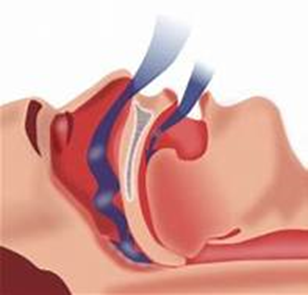A nurse is instructing a patient about relaxation techniques for pain management.
The patient should:.
Keep bright lights on in the room.
Use this technique as a way to wake up in the morning.
Tense and relax individual muscle groups, starting with the toes and feet.
Try to tense and relax all of the muscles of the body at the same time.
The Correct Answer is C
Choice A rationale:
Keeping bright lights on in the room is not conducive to relaxation. Bright lights can be stimulating and may increase stress, which is counterproductive when trying to manage pain through relaxation techniques.
Choice B rationale:
Using relaxation techniques as a way to wake up in the morning is not the intended purpose of these techniques. Relaxation techniques are typically used to reduce stress, anxiety, and pain, especially when one is trying to rest or sleep.
Choice C rationale:
Tensing and relaxing individual muscle groups, starting with the toes and feet, is a common method for progressive muscle relaxation. This technique can help reduce muscle tension and promote overall relaxation. It is an effective approach to pain management.
Choice D rationale:
Trying to tense and relax all of the muscles of the body at the same time may be difficult for most individuals and is not a commonly recommended relaxation technique. It can be challenging to achieve the level of focus and control required for this method, and it may not be as effective as focusing on individual muscle groups.
Nursing Test Bank
Naxlex Comprehensive Predictor Exams
Related Questions
Correct Answer is C
Explanation
The correct answer is: C. Decreased energy.
Choice A reason: Hypotension is not typically associated with obstructive sleep apnea (OSA). OSA is more commonly linked with hypertension due to the frequent arousals during sleep that activate the sympathetic nervous system, leading to increased blood pressure.
Choice B reason: Pneumonia is an infection of the lungs and is not a direct consequence of OSA. While OSA can affect the respiratory system, it does not cause pneumonia. However, individuals with OSA may have a higher risk of respiratory infections due to compromised breathing during sleep.
Choice C reason: Decreased energy is a common symptom of OSA. People with OSA experience repeated episodes of partial or complete upper airway obstruction during sleep, leading to disrupted sleep patterns and insufficient rest. This results in daytime sleepiness and fatigue, which are hallmark signs of the condition.
Choice D reason: Thyroid disease, specifically hypothyroidism, can be associated with OSA, but it is not a direct finding of the condition. Hypothyroidism can lead to changes in the soft tissues of the upper airway and contribute to the development of OSA, but it is not a symptom used to diagnose OSA.

Correct Answer is B
Explanation
Choice A rationale:
Offering an ice pack to place on the neck would not be an appropriate response in this situation. The patient has already complained that the ice massage is making the pain worse, so providing additional cold application may exacerbate their discomfort.
Choice B rationale:
The most helpful response in this scenario is to acknowledge the patient's discomfort and stop the cold application. Not everyone responds positively to cold therapy, and it's essential to respect the patient's feedback and provide alternative methods for pain relief.
Choice C rationale:
Alternating hot and cold applications may be helpful for some patients, but in this case, the patient has already expressed that the ice massage is exacerbating their pain. Suggesting this approach without addressing the patient's immediate concern is not appropriate.
Choice D rationale:
While it's true that the discomfort from the ice massage may subside in a few minutes, it's important to prioritize the patient's comfort and address their pain immediately. Continuing an intervention that is causing increased pain is not in the patient's best interest.
Whether you are a student looking to ace your exams or a practicing nurse seeking to enhance your expertise , our nursing education contents will empower you with the confidence and competence to make a difference in the lives of patients and become a respected leader in the healthcare field.
Visit Naxlex, invest in your future and unlock endless possibilities with our unparalleled nursing education contents today
Report Wrong Answer on the Current Question
Do you disagree with the answer? If yes, what is your expected answer? Explain.
Kindly be descriptive with the issue you are facing.
